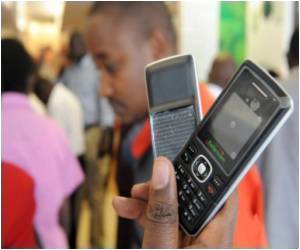A tiny silicon chip may aid in the detection of dangerous airborne chemicals and alert emergency responders via the cell phone network.

"This technology could map a chemical accident as it unfolds," said Michael Sailor, professor of chemistry and biochemistry at the University of California, San Diego who heads the research effort.
In collaboration with Rhevision, Inc., a small startup company located in San Diego, Sailor's research group at UCSD has successfully finished the first phase of development of the sensor and have begun to work on a prototype that will link to a cell phone.
The sensor- a porous flake of silicon- changes colour when it interacts with specific chemicals. By manipulating the shape of the pores, the researchers can tune individual spots on the silicon flake to respond to specific chemical traits.
"It works a little like our nose," Sailor said. "We have a set of sensory cells that detect specific chemical properties. It's the pattern of activation across the array of sensors that the brain recognizes as a particular smell. In the same way, the pattern of color changes across the surface of the chip will reveal the identity of the chemical."
Their chips can already distinguish between methyl salicylate, a compound used to simulate the chemical warfare agent mustard gas, and toluene, a common additive in gasoline.
Advertisement
Fire-fighters could use this technology to detect carbon monoxide during fires and mine workers could use it to detect impending explosion in mines.
Advertisement
SAV










